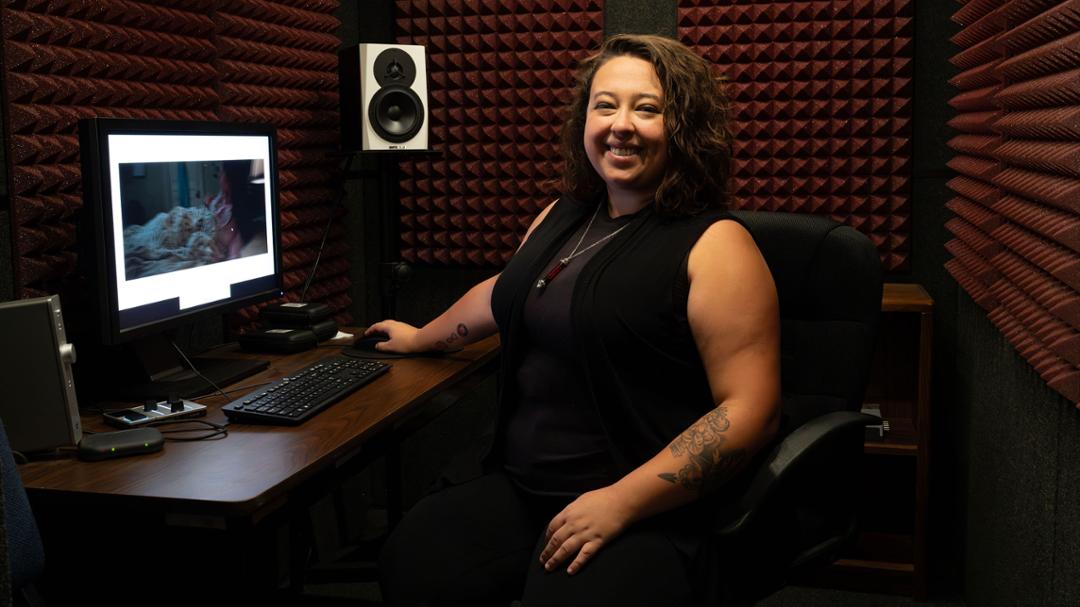Elizabeth Acosta and the Department of Interdisciplinary Arts are discovering what makes a jump scare, scary.
Elizabeth Acosta remembers the moment she fell in love with horror films.
She was living outside of Chicago during elementary school when her mother suggested they watch “The Others” starring Nicole Kidman.
“My mom picked that film because it wasn’t ‘too scary,’” Acosta says. “She didn’t want to traumatize me, but my dad wasn’t into horror films and my mom wanted someone to watch with.”
Her mother got her wish, and more.
Acosta is now one of the leading researchers in the country when it comes to music and psychology’s role in horror movie jump scares.
Rising Heart Rate
Acosta is earning her doctorate degree in Fine Arts at Texas Tech University’s School of Music. Accepted into the Texas Tech Graduate School, she is now a researcher in the Performing Arts Research Lab (PeARL), part of the J.T. & Margaret Talkington College of Visual & Performing Arts’ Department of Interdisciplinary Arts.
“My research examines how jump scares work and why,” she explains.
Acosta asks what makes a jump scare a good one. If we expect one, how do they continue to subvert our expectations? How does that affect how we watch horror films?
To find out, Acosta recruited participants to watch horror films. She chose non-graphic but startling moments to test her theories. Her research makes use of new biofeedback equipment acquired as part of the college’s National Endowment of Arts research lab grant. This allows her to capture and analyze participants’ heart rate, eye movement and electrodermal activity. She takes note of what elements lead to the best scares.
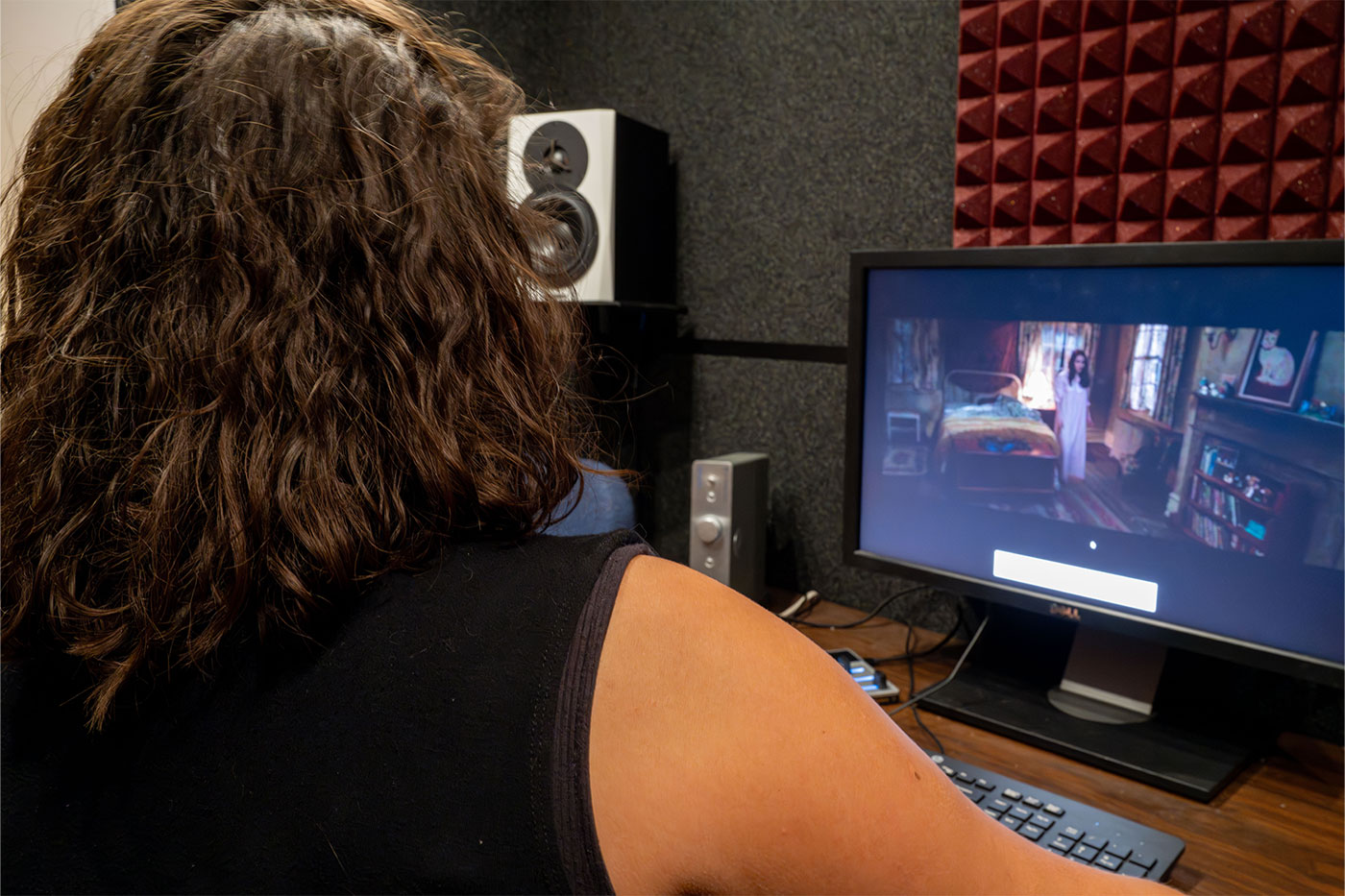
She is looking for what audial or visual cues do the real work of scaring.
Acosta has now begun presenting her research at conferences internationally. This semester, she’s preparing her proposal defense. She’s nearing the end of her time at Texas Tech but acknowledges some plot twists that got her here in the first place.
Parting Clouds
Acosta was quite musical growing up. In addition to finding good horror flicks to watch with her mom, she stayed busy taking piano and clarinet lessons and singing in choir. As she neared college, she weighed music against her other interests. She loved music, but she didn’t see herself pursuing it professionally. She had so many other interests it felt like she’d be pigeonholing herself into something too niche.
She ended up attending Washington University in St. Louis where she studied in their philosophy-neuroscience-psychology (PNP) program, all areas of interest to Acosta.
In her third year, she studied abroad for a semester at the University of Edinburgh. She recounts her time in the old city with an almost spellbound telling. For someone who loves spooky season and the paranormal, Edinburgh was utopia.
The cobblestone streets, the 12th century castles, and the legendary underground passages all created a spine-tingling setting for the young student to explore. For the horror fan, it’s hard to imagine a city more haunted than Edinburgh with its ofttimes dark history.
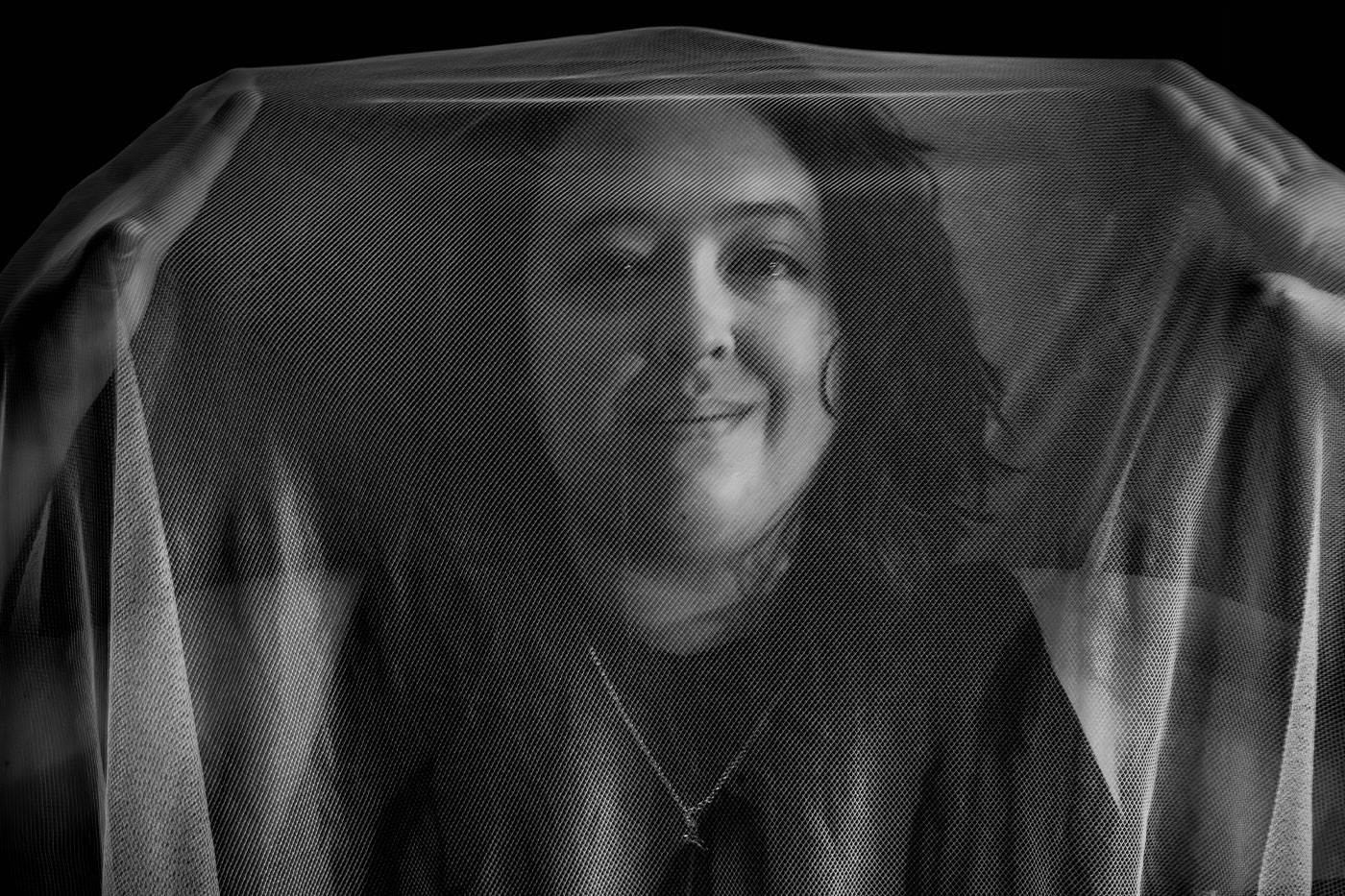
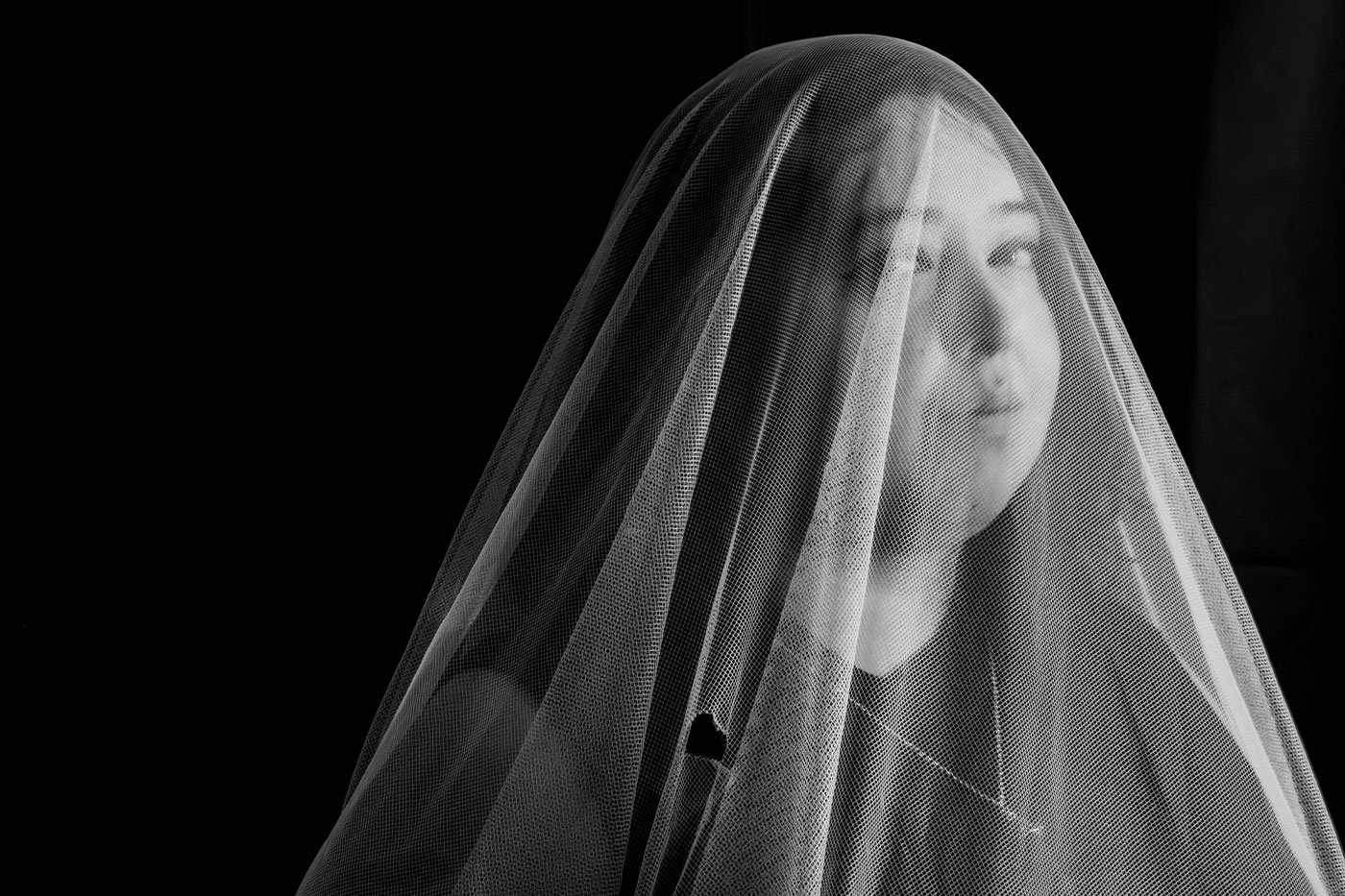
While there, Acosta enrolled in a psychology of music class offered by the university.
“That course was a life-changer for me,” she says.
The course was about research happening in music cognition. From staving off Alzheimer’s to aiding in early childhood development, there was a use for music cognition in almost everything.
“It’s like the clouds parted,” she remembers. “I realized there was a way to combine two things I was passionate about. I didn’t have to pick and choose.”
Acosta returned to the U.S. and graduated from Washington University in St. Louis. She then returned to the U.K. to earn her master’s degree from the University of Leeds in Yorkshire. Music cognition was not as widely studied in the U.S., so it made sense for her to study abroad again. She studied under David Ireland, one of the foremost experts in music cognition, especially in terms of how it relates to film.
Unfortunately, as the year-long program ended, COVID-19 took hold. The last few months of Acosta’s master’s program were spent quarantining in her small sublet. Then, she returned home.
Despite COVID-19, she would have loved to stay in England for her doctoral studies, which she was set on doing at this point.
But life took another turn.
“I came home to spend time with my mom,” Acosta says. “She had pre-existing health conditions that put her at high risk. It was scary.”
And not the kind of scary they enjoyed.
Pin in the Map
As her mother regained her strength, Acosta knew she’d pursue her doctoral degree in the U.S. She didn’t want to be so far from family. Unfortunately, she knew finding the kind of programs that existed in the U.K. would prove to be challenging.
“In Europe there’s more integration between the arts and government funding,” Acosta explains. “That funding allows for more research throughout many art programs.”
She knew there had to be something comparable in the U.S., so she did her research. Acosta found a resource through the Society for Music, Perception and Cognition. The website had a map with pins on locations where universities had music cognition research opportunities.
Acosta created a massive spreadsheet with information from every program she found.
But she kept running into the same conundrum – she’d have to either get a doctorate in music theory or neuroscience and tailor each one for her own purposes. Music theory felt too far removed from her research focus in horror films. As for neuroscience, she preferred only seeing brains in “Frankenstein.”
That’s when she noticed a pin on the map in West Texas.
“I read about Texas Tech’s Department of Interdisciplinary Arts and the PeARL,” she says. “The Fine Arts doctoral program was truly interdisciplinary. I could do exactly what I wanted to do.”
She investigated doctoral programs at Princeton University, the Ohio State University and the University of California San Diego. But Texas Tech seemed like the best fit.
Acosta got on a Zoom call with the PeARL’s Co-Directors, Peter Martens, chair of the Department of Interdisciplinary Arts, and David Sears.
“Liz was the poster child for our doctoral program’s interdisciplinary ambitions,” Sears says. “Practically from the moment she stepped foot on campus, she was heavily involved in the lab’s various behavioral and computational research projects, whether that was creating stimuli or collecting and analyzing new data.”
Sears, now Acosta’s dissertation chair, says he has no doubt her research will make a significant contribution to the fields she represents.
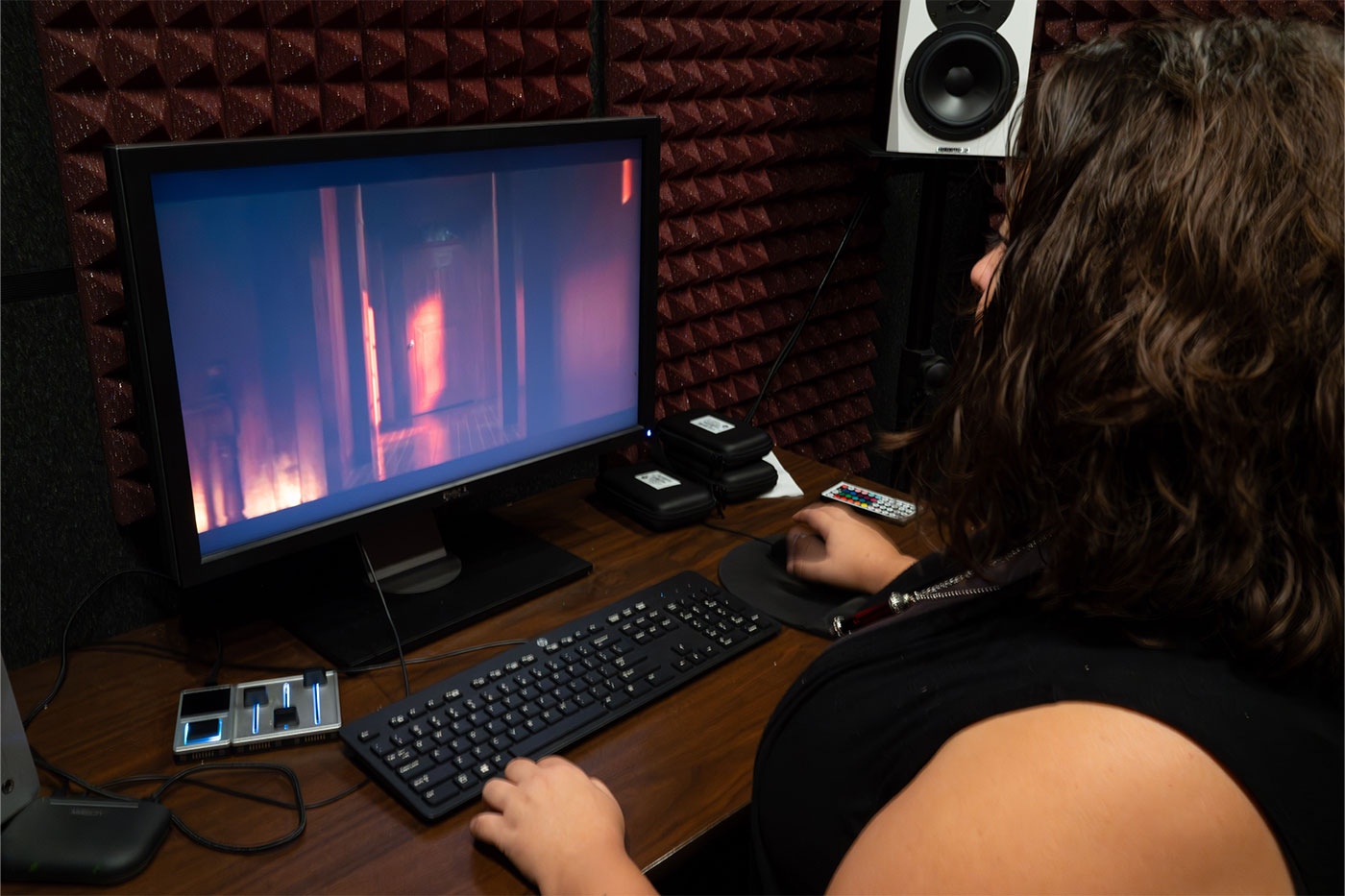
“In my view, no scholarship to date has investigated this issue from such an interdisciplinary perspective, in large part because doing so requires the researcher to develop a suite of humanistic, experimental and computational methods, for which Liz is uniquely qualified.”
Acosta attributes her success so far not only to Martens and Sears, but also to other department faculty and her lab members.
“Both have been there for guidance and advice, as well as being willing to be involved in the pilot studies,” Acosta says.
Still Surprised
This Halloween, Acosta is looking forward to enjoying the horror films on the top of her list: “Hereditary” and “Midsommar.” Both are written by Ari Aster, who is quickly making a name for himself when it comes to dark comedy and horror.
“I don’t consider myself easily emotionally swayed,” Acosta says. “But when the credits for those films rolled, I was sad and stunned. I was affected.”
And that’s the magic that keeps Acosta coming back to her research.
Even within the trope of a well-known, and sometimes well-worn, genre such as horror, a new combination can come along, and with just the right sounds, sights and scares, it can surprise us.
Acosta doubts there’s an exact formula when it comes to an effective jump scare, but if there is, she’ll be the one to uncover it.

